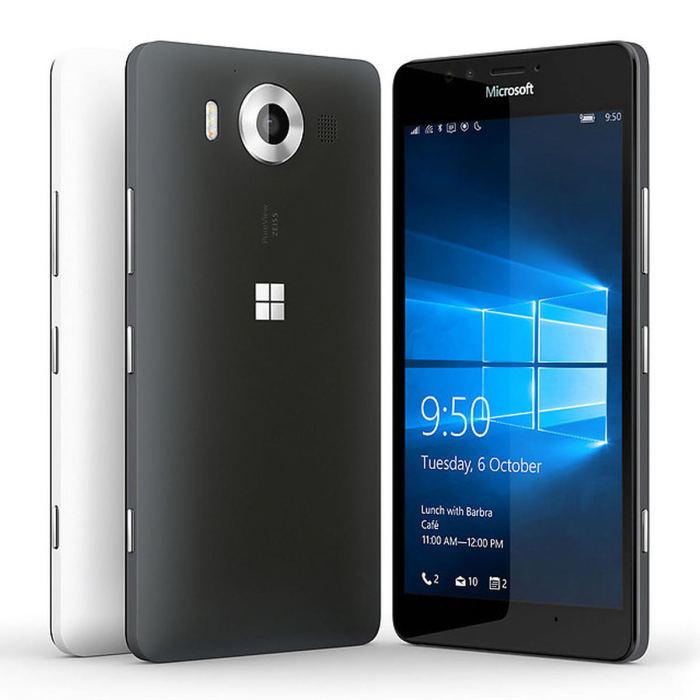Lumia 950 flagship branding confirmed: Microsoft’s foray into the high-end smartphone market with the Lumia 950 was a bold move. This device, launched in 2015, aimed to challenge the dominance of Android and iOS with a unique proposition centered around Windows Phone. The Lumia 950’s branding strategy sought to capture the attention of tech enthusiasts and discerning consumers, promising a powerful and innovative mobile experience.
The Lumia 950 was positioned as a premium device, boasting a sleek design, high-quality build materials, and advanced features like a 5.2-inch AMOLED display, a 20-megapixel PureView camera, and a fast Qualcomm Snapdragon 808 processor. Microsoft aimed to attract users who valued productivity, multitasking, and a seamless integration with the Windows ecosystem. The branding campaign emphasized these features and highlighted the Lumia 950’s unique selling points, particularly its focus on a “Continuum” experience that allowed users to seamlessly transition between their smartphone and a desktop environment.
The Future of Lumia and Windows Phone: Lumia 950 Flagship Branding Confirmed
The Lumia series of smartphones, once a prominent player in the mobile market, faced a decline that ultimately led to its discontinuation. While the Lumia brand held its own for a period, factors such as market share, competition, and software development contributed to its eventual fate. Examining the decline of Lumia and Windows Phone provides valuable insights into the dynamics of the mobile industry and the future of mobile operating systems.
Factors Contributing to the Decline of Lumia and Windows Phone
The decline of Lumia and Windows Phone can be attributed to a combination of factors:
- Limited App Ecosystem: The Windows Phone platform faced a significant challenge in attracting developers and building a robust app ecosystem. Compared to Android and iOS, which boasted a wider range of apps, Windows Phone struggled to gain traction among developers. This limited the appeal of the platform for consumers, as they had access to a smaller selection of apps and services.
- Market Share: Despite initial successes, Lumia and Windows Phone failed to gain significant market share, particularly in the highly competitive smartphone market. The dominance of Android and iOS made it difficult for Windows Phone to establish a foothold and compete effectively.
- Hardware Competition: The rapid advancements in smartphone hardware, particularly from Android manufacturers, put pressure on Lumia to keep pace. While Lumia offered innovative features, the competition from Android devices, often with lower price points, posed a significant challenge.
- Software Development: Microsoft’s approach to software development for Windows Phone, including updates and new features, faced criticism for being slower compared to its competitors. This contributed to a perception of the platform as less innovative and responsive to user needs.
Impact of Microsoft’s Decision to Discontinue the Lumia Line, Lumia 950 flagship branding confirmed
Microsoft’s decision to discontinue the Lumia line marked a significant shift in its mobile strategy. This decision had several impacts:
- Focus on Software: By discontinuing the Lumia line, Microsoft shifted its focus to software development, particularly for Windows 10 and its ecosystem. This strategy aimed to leverage the company’s strengths in software and services across multiple devices, including smartphones.
- Partnering with Other Manufacturers: Microsoft began partnering with other smartphone manufacturers to bring Windows 10 Mobile to a wider range of devices. This approach aimed to expand the reach of the platform and attract new users.
- Decline in Market Share: The discontinuation of Lumia further reduced Windows Phone’s market share, making it even more challenging to compete with Android and iOS.
The Future of Mobile Operating Systems
The mobile operating system landscape continues to evolve, with Android and iOS maintaining their dominance. However, the future of mobile operating systems is likely to be influenced by several factors:
- Emerging Technologies: The rise of emerging technologies, such as 5G, artificial intelligence, and augmented reality, will shape the future of mobile operating systems. These technologies will drive new features and functionalities, requiring operating systems to adapt and evolve.
- User Experience: User experience will remain a key differentiator for mobile operating systems. Operating systems that offer intuitive interfaces, seamless integration with other devices, and personalized experiences will be more successful.
- Security and Privacy: Security and privacy will continue to be paramount concerns for users. Operating systems that prioritize user data protection and offer robust security features will gain an advantage.
- Innovation: The mobile operating system market is constantly evolving, with new players and innovations emerging. Operating systems that embrace innovation and adapt to changing user needs will be best positioned for success.
Final Wrap-Up
Despite the Lumia 950’s innovative features and ambitious branding, it faced an uphill battle against established players in the smartphone market. The dominance of Android and iOS, coupled with the perception that Windows Phone was a less mature platform, ultimately hindered the Lumia 950’s success. The device’s legacy serves as a reminder of the challenges and opportunities inherent in the smartphone industry, demonstrating the importance of strong branding, effective marketing, and a compelling user experience in a highly competitive market.
The Lumia 950 flagship branding confirmation is a significant move for Microsoft, signaling their continued commitment to the mobile market. This announcement comes at a time of rapid innovation in the tech world, particularly in the realm of autonomous vehicles.
It’s interesting to note that General Motors’ self-driving car initiative will be launched in partnership with Lyft, gms self driving car will be launched with lyft , a move that could potentially disrupt the transportation industry. As Microsoft navigates this evolving landscape, the Lumia 950 branding confirmation signifies their ambition to remain a key player in the connected future.
 Securesion Berita Informatif Terbaru
Securesion Berita Informatif Terbaru
